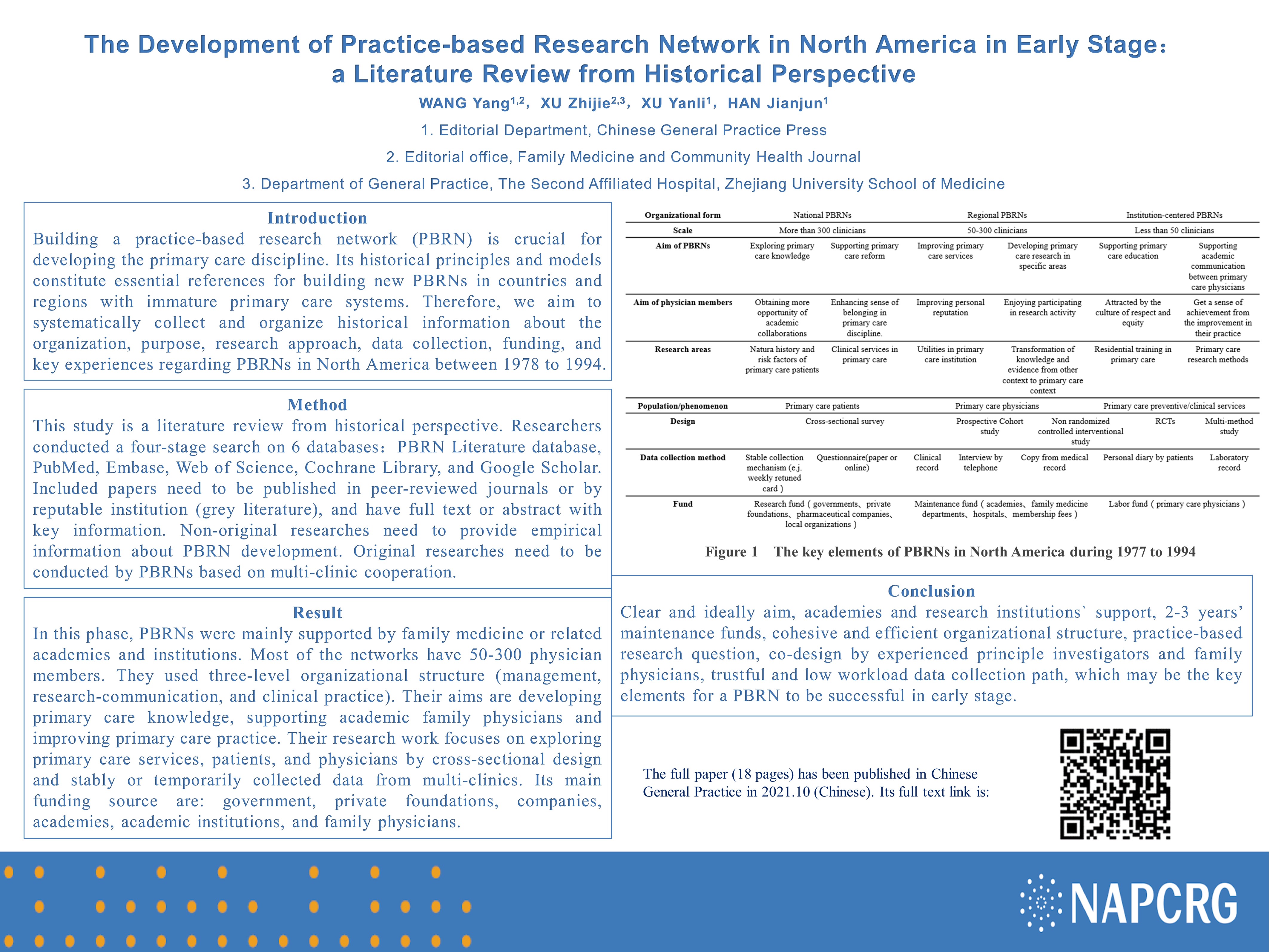PCR069: The development of practice-based research network in North America in 1978 to 1994: a historical literature review
Yang Wang, PhD; Zhijie Xu, MD; Yanli Xu, MD, PhD; Jianjun Han, MPH, MBA, FCSMEA-CGP
Abstract
Objective: To systematically collect and organize historical information about the organization, purpose, research approach, data collection, funding, and key experiences regarding PBRNs in North America between 1978 to 1994.
Study Design: Literature review.
Dataset: Publications searched from the PBRN Literature database, PubMed/MEDLINE, EMBASE, Web of Science, Cochrane library, Google scholar.
Publications studied: Of 284 identified historical publications, 103 were included. These were published by peer-reviewed journals (articles) or reputable institutions (grey literature), and are full texts or abstracts. Non-original studies should introduce PBRNs’ organization, purpose, research approach, data collection, funding, and key experiences. Original studies should be conducted by PBRNs based on data sharing and inter-institutional cooperation across clinics.
Results: PBRNs were supported by family medicine or related academies and institutions. They generally have approximately 50-300 members (managers, researchers, liaison officers, and clinical practitioners). Their aims include developing primary care knowledge, supporting academic family physicians, and improving primary care practice. Their research explored primary care services, patients, and physicians mainly using cross-sectional designs and stably or temporarily collected data from multiple clinics. Their funding requirements included research funds (government, private foundations, companies), maintenance budgets (academies, academic institutions), and data collection costs (family physicians). Favorable conditions are sufficient initial funding, rigorous co-design by experienced principal investigators and family physicians, a culture of equality, unity, and communication, and low burden on clinicians.
Conclusions: Building PBRN in an underdeveloped primary care system requires academies and research institutions’ support, unity-centered organizational structures, the common aim of developing primary care knowledge, service and practitioners, a practice-based research question, rigorous co-design, reliable data collection methods with light burden on clinicians, and sufficient maintenance funds in the early stages.

Jack Westfall
jwestfall@aafp.org 11/20/2021terrific study on the early years of PBRNs. thanks for this research and presentation. hope we might connect. thanks